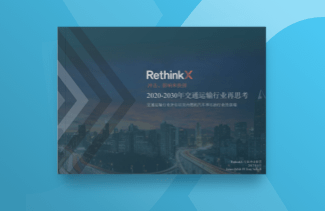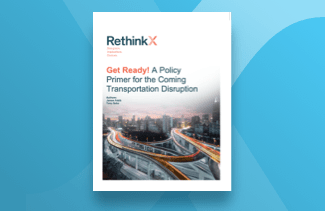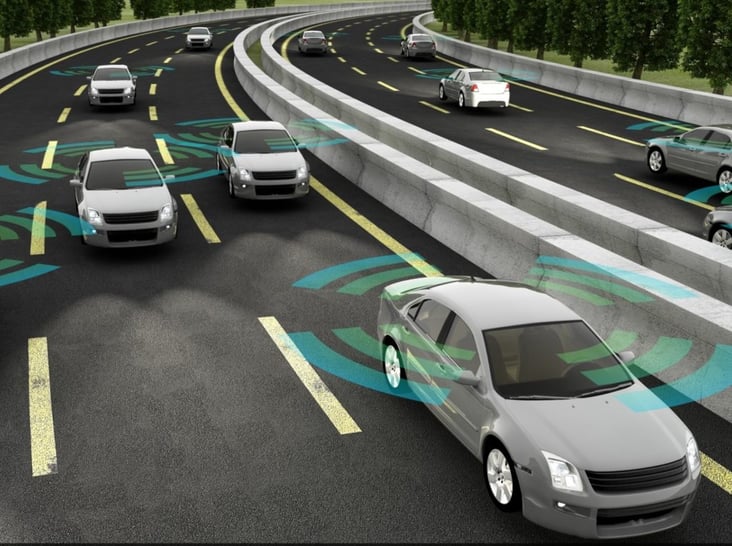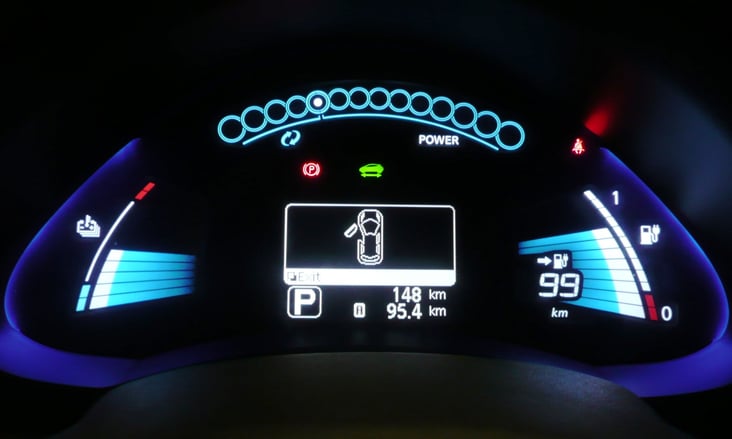Topic / Transportation / In-depth
Transport-as-a-Service

Within 10 years from the date of regulatory approval, 95% of U.S. passenger miles traveled will be served by on-demand autonomous electric vehicles owned by fleets, not individuals, in a new business model we call:
Transport-as-a-Service (TaaS)
On-demand, autonomous electric vehicles owned by fleets, not individuals
The convergence of electric vehicles (EVs) with autonomous technology and ride hailing will create an entirely new form of transportation
This new business model is called Transport-as-a-Service (or robo-taxis).

TaaS will disrupt our transportation sectors entirely
Within 10 years of the regulatory approval of autonomous, driverless vehicles:
TaaS will be 4-10x cheaper than the current individual-ownership model.
As a result, adoption will be rapid: 95% of U.S passenger miles traveled will be by Taas within 10 years from the date of regulatory approval.
With a shift to ridesharing, fewer cars will travel more miles. The usage of privately-owned passenger cars could drop by 80% within 10 years after regulatory approval of autonomous driving technology for TaaS.

The Future of Transportation
End of individual car ownership
The TaaS disruption will lead to the end of car ownership. With no upfront costs and a charge per mile (or subscription), TaaS will make it vastly cheaper for people to access driverless cars when needed, rather than driving their own vehicle.
Fleet-owned and operated vehicles
TaaS cars will be fleet owned and will be in use far more than vehicles currently, travelling 10x the distance of an individually owned car each year (100,000 miles instead of 10,000 miles).
New business models & sector transformation
The TaaS business model has the potential to change the transportation landscape. This disruption will reshape the world’s energy economy.
How will TaaS unfold?
The approval of autonomous vehicles
The introduction of AVs will unleash a competitive market-share grab.
This will occur among existing and new ride-hailing companies in expectation of the outsized rewards of market and network opportunities.

Rapid speed and extent of adoption
Pre-TaaS platform providers like Uber, Lyft and Didi are already engaged, and others will join this high-speed race.
Winners-take-all dynamics will force providers to make large up-front investments to provide the highest possible level of service, ensuring supply matches demand in each geographic market they enter.

Competition and cost drives and accelerates TaaS adoption
In this intensely competitive environment, businesses will offer services at a price trending toward cost.
Fleets will quickly transition from human-driven, internal combustion engine vehicle to autonomous electric vehicles because of cost factors. These include 10x high vehicle use rate, 500,000-mile lifetimes, and lower costs for maintenance, energy, finance and insurance.

TaaS will be four to ten times cheaper per mile than buying a new car and two to four times cheaper than operating an existing vehicle in 2021
What are the implications of TaaS?
Higher vehicle utilization
A-EV fleets will have 10x higher vehicle utilization rates and lower maintenance, energy, finance and insurance costs.
The main causes of vehicle degradation are all vastly reduced in an A-EV. A-EVs experience reduced friction, heat and vibration. This leads to longer vehicle lifetimes and fewer maintenance costs.
Cheaper transportation costs
Higher utilization will result in cheaper transportation, at a cost per mile 4-10x cheaper than operating a fuel car.
Higher utilization will result in transportation at a fraction of today’s price, driving rapid consumer adoption. Vehicle manufacturers will compete to maximize vehicle lifetimes and minimize operating costs. These changes will deliver TaaS at a cost per mile 4-10x cheaper than operating (fuel, maintenance and insurance) of an existing vehicle.
Decimation of the oil & gas industry
The TaaS disruption will decimate oil and gas value chains. This will cause demand for oil—and the price—to plummet.
The TaaS disruption will have enormous implications across the transportation and oil industries, destroying trillions of dollars in investor value — but also creating trillions of dollars in new business opportunities, consumer surplus and GDP growth.
Carbon-free road transportation system
The new TaaS transport system (passenger cars, not commercial vehicles) will reduce personal transport energy demand by 80% and tailpipe emissions by over 90%.
The TaaS disruption will dramatically reduce air pollution and greenhouse gases from the transport sector, and improve public health. Assuming a concurrent disruption of the electricity infrastructure by solar and wind, we may see a largely carbon-free road transportation system in the coming decade.
Road to free transportation
TaaS pool—the TaaS equivalent of Uber pool—will have a low cost (1–2 cents per mile) that could be covered by other revenue sources – leading the way to free road transport.
TaaS Pool will be cheaper and more convenient than most public transport, blurring the public and private distinction and potentially leading to a merger between them. TaaS's low cost opens the way to free transport (initially in the TaaS Pool model), where TaaS' cost (1-2 cents per mile) is covered by other revenue sources – advertising, data monetization, entertainment or product sales.
In our 2017 Rethinking Transportation report, we stated that TaaS would save the average American more than $5,600 USD per year in transportation costs.
This is equivalent to $7100 in 2024 US- an almost 10% increase in median household income, keeping an additional $1 trillion per year in Americans' pockets by 2030 and potentially generating the largest infusion of consumer spending in history.
Increased mobility. Less traffic accidents and deaths. Less congestion. More efficient use of vehicles & space.
TaaS opportunities
-
Drop in transport costs - Dramatic drop in transportation costs, saving each U.S. household $5,600 per year, or $1 trillion in aggregate per year
-
GDP boost - Potential GDP boost of additional $1 trillion from increased productivity from time savings
-
Universal mobility access - Near-universal access to mobility across all demographics, including those excluded today
-
Land repurposing - Ability to repurpose vast tracts of land in cities due to diminishing vehicle & parking needs
-
New opportunities - The creation of new industries and business opportunities
-
Energy demand drops - Reduction in personal transport energy demand by 80% and tailpipe emissions by over 90%, reducing pollution, improving public health and saving lives
Challenges to plan for
- Job losses - Substantial job losses in conventional energy and transportation industries
- Market influence - 70% drop in number of passenger cars and trucks manufactured each year, impacting car dealers, maintenance and insurance companies
- Collapse of oil & gas - A peak in oil demand in 2020, prompting a price collapse to around $25 per barrel

Choices for Decision-makers:
Adopting TaaS requires no investment or lock-in
As with any technology disruption, adoption will grow along an exponential S-curve. Consumers can try it easily and increase usage as they become more comfortable with it. Even in suburban and rural areas, where wait times and cost might be slightly higher, adoption is likely to be more extensive than generally forecast because of the greater impact of cost savings on lower incomes.
Our analysis forecasts a very fast and extensive disruption
TaaS will become cheaper and better to use over time and individually owned vehicles more expensive and harder to use. Network effects, tipping points, and market forces that accelerate disruption will change dynamically over time and increase the speed and extent of TaaS adoption.
Regulation can help drive this process even faster
Decision-makers can accelerate the net-positive benefits of the TaaS disruption by:
- hastening the development of AV technology through broad trials
- removing barriers
- accelerating adoption by ensuring universal access, special lanes or routes for AVs to allow faster travel and greater volume of traffic
- or restrictions on humans drivers in cities or during peak times.

Featured Report
Uncover Transport-as-a-Service in more depth
Download our Rethinking Transportation report

Transportation Reports
Explore our Transportation Blogs:
Stay Connected
Join the community
Sign up with your email address to receive research, news and analyses from RethinkX.














